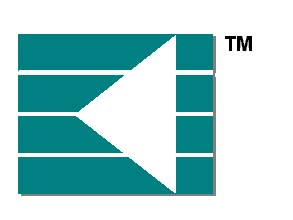IT in '03 to Turn Potential Into Performance
|
Economic Imperatives Will Complete IT's Transition from Leading Edge to Fundamental Infrastructure |
Well Underway |
The onset of December nearly always triggers a spate of predictions for the year ahead, most of which are either too macro to be meaningful or too micro to be relevant. In an effort to strike a useful balance, Kinetic Information this year offers the following postulation to explain why we believe 2003 will be a much better year than 2002, and will lay the foundation for even better years to follow.
War May be Hell, but Its Sure Good for Business
Continuing concerns over homeland security and the likely gathering
of war clouds over the Iraqi horizon (and elsewhere) will deepen large
enterprises investments in the safeguarding and hardening of their computing
and communications networks. In fact, such spending will become so much
a part of the nation's vocabulary that smaller organizations begin to follow
suit as well. The end result will be the establishment of practical and
secure computing practices up and down the industrial spectrum, and the
realization that information technology is as fundamental a piece of our
economic infrastructure as highways, telephones, and power plants. This
is not to say that corporate IT is being viewed as frivolous today, but
rather that it will come to be appreciated as a must-have capability
rather than treated on a nice-to-have but we cant afford it basis, and
purchased to the tune of an overall spending increase of 3-5% with
that same urgency in mind.
In fact, emerging new models for computing and communications provide plenty of evidence that the mainstreaming of IT is already well underway. History tells us that major re-thinks of favorite strategies for accomplishing important tasks occur when a certain critical mass of usage has been reached, and the law of diminishing returns come into play. New economies of scale were needed to facilitate the distribution of electricity, and so AC replaced DC as the technology of choice. The same was true of early television, and CRTs thereby displaced spinning disks. And because the same also is true of information technology, a similar transformation is now required for IT to get to its next level, and indeed, this move already is getting underway.
New Models Breeding New Opportunities
In preparing for the future, be aware that there are two major trends
on which to zero in:
- As computing and communications networks (especially in the wireless arena) draw ever closer together, hub-based architectures will become all the rage. The efficiencies gained will cause usage to spike dramatically and in turn will attract all manner of communications carriers to the table as potential partners and possible acquirers.
- As the outcry for enterprise interoperability (EIO) grows louder, customers will make ever-increasing use of functional components when developing applications. To support the flexibility EIO requires, vendors will be forced to open the gates to the technical territories they have mapped out for themselves and provide (directly or through partners and/or acquisitions) a much broader array of capabilities than has been the case to date.
|
The New Common Architecture Following Telephony, Transportation & Utilities
By JOHN PARKER Hub-based architectures are about to burst on the scene in a very big way as large organizations seek new strategies for managing a virtual tidal wave of computer usage and network traffic, and require systems that support a new economy of scale. How do we know? Because history tells us it will be so! click here to continue |
Sea Change Expected as Converged Solutions,
Kinetic Informations ongoing investigation of the business dynamics surrounding technology adoption has made it clear that productivity in application development terms has taken on a new meaning and is causing a sea change in the way IT products and services will be bought and thereby sold. click here to continue |
 Kinetic
Information Home
Kinetic
Information Home